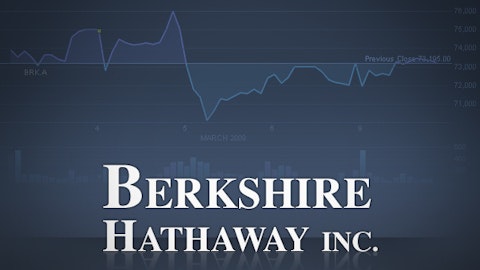Google Inc (NASDAQ:GOOG) wants your shareholder capital, but doesn’t want to give you a real say in how the company is run.
In a proposal listed in Google’s 2013 proxy (link opens PDF), shareholder John Chevedden laments, “By allowing certain stock to have more voting power than other stock [Google] takes our public shareholder money but does not let us have an equal voice in our company’s management. Without a voice, shareholders cannot hold management accountable.”
Here’s why I think he has a point.
Google Inc (NASDAQ:GOOG)‘s shareholder system
Since its initial public offering in 2004, Google has had two classes of stock. The stock bought by average shareholders is Class A stock, which has 1 proxy vote per share. Class B stock has 10 votes per share, and is owned by co-founders Larry Page and Sergey Brin, as well as chairman Eric Schmidt. Together, the three insiders controlled about 64% of the total vote as of Google Inc (NASDAQ:GOOG)’s last 10-Q.

Because these insiders have a significant majority of the vote, they have effective control over any matters submitted to shareholders for review, including the selection of directors and approval of shareholder proposals.
Now Google Inc (NASDAQ:GOOG) wants to issue a third class of stock, Class C, that has no voting rights whatsoever, ensuring that Page, Brin, and Schmidt keep tight control over the company. Here’s how it will work: For every share of Class A stock Google investors hold, the company will give them one share of Class C stock. While the price of each A share will decrease by half, the valuation of the C shares will start out as equal to that of the A shares, which means that the introduction of the new C shares won’t dilute the holdings of Google Inc (NASDAQ:GOOG)’s investors.
Management’s defense
Google defends its dual-class voting structure (and future tri-class structure) by suggesting that it helps offer long-term stability that will promote better long-term returns for shareholders. Similar justifications are offered for the dual-class voting structures at Facebook Inc (NASDAQ:FB), Groupon Inc (NASDAQ:GRPN), LinkedIn Corp (NYSE:LNKD), and Zynga Inc (NASDAQ:ZNGA).
This point has some merit. Sometimes shareholders can be focused on short-term returns that disrupt the long-term growth and survival of the company. As Google points out in its founders’ IPO letter, Warren Buffett introduced the dual-class voting structure at Berkshire Hathaway Inc. (NYSE:BRK.B) to promote long-term success and to protect the company from shareholders who are overly focused on quarterly results.
However, as shareholders evaluate these arguments, I believe they should ask themselves whether they can trust each company’s leadership to do what is best for shareholders. In evaluating Google’s argument, shareholders should also remember that at Berkshire, Class A stock isn’t limited to insiders (like it is at Google).
Risks at Google
In his shareholder proposal pushing for equal voting rights, Chevedden points out that this power structure has allowed Google to push through compensation packages that cannot be justified in terms of shareholder value. For example, in 2011 the company awarded chairman Eric Schmidt an equity package that was worth $100 million without any job performance requirements attached to it. Chevedden also pointed out that corporate governance organization GMI Ratings gave Google a D grade in 2012 and marked it as a “High Concern” for takeover defenses and “Concern” for executive pay.
I believe that Chevedden is right to be upset about these things, as I believe they show that Google leadership is abusing its control of the company to make decisions that are not in the best interests of long- or short-term shareholders.

